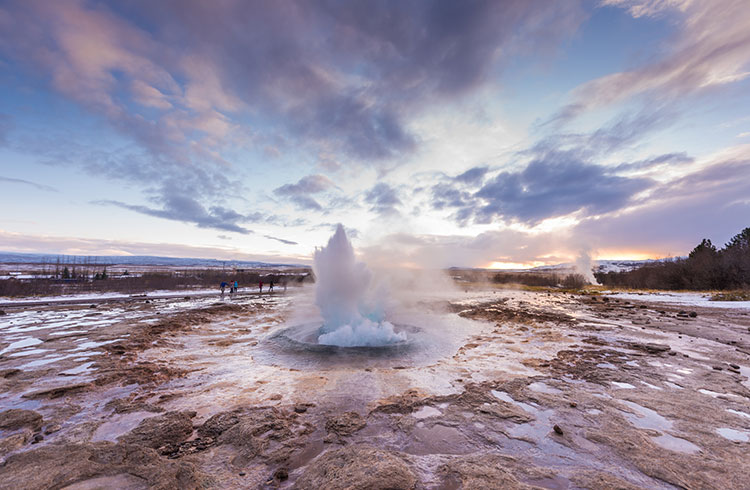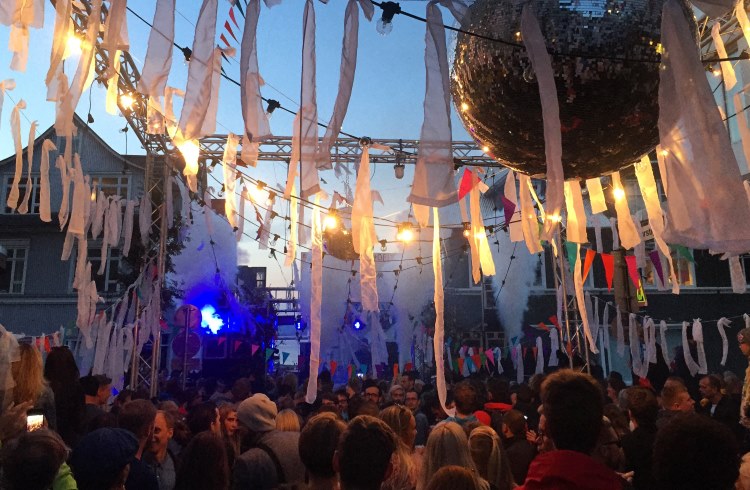5 Ways to Experience Geothermal Power in Iceland
Lanthy shares her tips on geysers, geothermal fields, hot pots and hot rivers to see in Iceland.
 Photo © Getty Images/Daniel Viñé Garcia
Photo © Getty Images/Daniel Viñé Garcia
Iceland and Greenland have long been at the center of a controversy regarding the origin of their names. It hardly seems fair that Iceland, with its lush green fields, was branded with such a chill-inducing moniker, and Greenland’s massive glaciers aren’t exactly verdant.
Legend has it that a switcheroo was made by a clever individual who wanted to lure visitors to Greenland - and away from Iceland - by providing a welcoming name to the former and an off-putting name to the latter. While the accuracy of this story is still in question, I can tell you this from personal experience:
Iceland gets cold. It may not be quite as icy as Greenland, but with 15% of its surface covered in glaciers and ice caps and many roads in the west and north made inaccessible by winter weather, I'd be hard-pressed to believe that someone was trying to be ironic when they gave the country its name.
Luckily for Icelanders and cold-adverse travelers like me, Iceland is not a one-dimensional place; while the land may be covered with ice, beneath the surface Iceland teems with magma. The hot substance pushes up between the Eurasian and North American tectonic plates and creates a wealth of geothermal energy- so much that heat, hot water
This juxtaposition of extreme hot and cold creates both volatile and enchanting combinations, making for some of the most unique sights and experiences that can be found anywhere on Earth. Here are five ways to take advantage of the geothermal perks for an unforgettable, and warm, stay in Iceland:
- Witness a geyser eruption
- Go on a hike through a geothermal field
- Get hot in a hot pot
- Swim in a hot river
- Snack on a warm treat
Witness a geyser eruption
When geothermally heated water meets cool surface water, a battle ensues and culminates in a thrilling and intense eruption of water and steam straight into the air. Iceland is not only covered with geysers but also home to Geysir, the first-known geyser that all subsequent geysers were named after (got that?). Nowadays, Geysir has retired itself and only erupts on occasion but luckily Strokkur, another large geyser in the same area, is more than happy to step in as the go-to geyser of choice. It erupts every 5-10 minutes to the elation of all who go and see it.
Go on a hike through a geothermal field
But watch where you step! The areas outside Hveragerði in South Iceland are filled with mud pots, fumaroles
Get hot in a hot pot
Most visitors to Iceland will stop by the Blue Lagoon to soak in the heated and reputedly curative geothermal waters, but for a more authentic local experience, a hot pot is
Essentially outdoor Jacuzzis without the bubbles, hot pots are found throughout Iceland and an integral part of the culture. Most villages have one, with a geothermal pool to match. While a nice diversion in fair weather, the experience takes on a whole new level of enchantment during the frigid winter months. Nothing compares to the feeling of soaking blissfully in the great outdoors while snow falls around you from a vast, open sky.
Swim in a hot river
If sitting in a pot seems too restrictive, and you’re looking for an experience that’s a bit closer to the Earth, go
Snack on a warm treat
if all of the geothermal drama and outdoor activities have you exhausted, stop at a local shop for a hard-boiled egg cooked in a hot spring or a piece of rye bread baked in a geothermal oven. Ingredients are placed in a container that’s buried underground; the bread is ready to eat a speedy 24 hours later. While you wait, sit back, relax, and ponder how lucky you are to be in Iceland.
About the Author
Lanthy is a freelance travel writer and blogger based in New York City. She shares her adventures at home and abroad on her blog, nod 'n' simile. Her next great journey will be a trip around the world beginning in July.
Related articles
Simple and flexible travel insurance
You can buy at home or while traveling, and claim online from anywhere in the world. With 150+ adventure activities covered and 24/7 emergency assistance.
Get a quote
No Comments